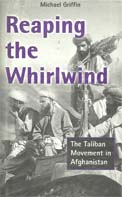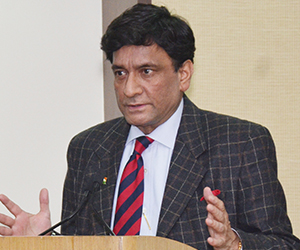Afghanistan 2014: Forward to the Past?
This is not a recent book, comparatively speaking; it was published in 2001, but remains topical. It covers the rise of the Taliban in the mid- to late-1990’s, and examines the main actors in the rise of this force. It is important to understand the phenomenon of the Taliban because it covers the activity and support of the force that is making a serious bid to return to power in Afghanistan once the western draw-down is complete.
The narrative is well-known, though there are aspects that are worth repeating. For a start, the real sponsor of the Taliban in the early 1990’s was not the ISI, but the Interior Minister under Benazir Bhutto, Nasirullah Babar. The ISI was at this stage still betting on Hikmatyar. Babar, of course, had dealt with the Islamic card in Afghanistan since the early 1970’s when he was the Inspector-General of the Frontier Constabulary, and had persuaded Zulfikar Ali Bhutto that the real answer to the Pashtun challenge inside Pakistan was to use the Islamic forces within Afghanistan and orient them outwards – towards Afghanistan itself. At that time, there was no particular focus on the Pashtuns – that was to come later under the rule of Zia-ul-Haq.
What we learn from the book is that the first of the convoys of trucks that drove into western Afghanistan in 1994 was deployed by the National Logistics Cell of the Pakistan Army. It is also clear that, among the Taliban, were members of the regular Pakistan Army, and even the ISI. The author suggests that the dramatic events that had the Taliban stand up to the local commanders and free the convoy was also stage-managed. If at least some of the commanders had not challenged the convoy, such a challenge would have had to be arranged under a “false flag” operation.
Kabul fell to the Taliban in the autumn of 1996, and the book records some curious international responses in the early days after the take-over. Once the horrors of the torture and killing of Najibullah subsided, a senior US Embassy official in Islamabad declared that the Taliban could play a useful role in “restoring strong, centralised government to Afghanistan”. In fact, the overall US position on the Taliban, as the book brings out, was that they had no difficulty with the Taliban – their only issue was the shelter that was provided to Osama bin Laden (OBL).
A similar noteworthy position was displayed by China. In the early UN Security Council discussions on any condemnation of the Taliban, it was the Chinese who were clear that they would veto any such resolution. Griffin also notes, in this connection, the “curious abstention of the United States”. No surprise, then, that Bill Richardson, the Cabinet-rank US Ambassador to the UN, visited Kabul in April 1997, and asked only that the Taliban keep OBL under wraps. As the author notes, there was no attempt to ask for the extradition of OBL. In the words of Richardson, “He [OBL] is a guest and Pashtun traditions do not allow any harm to come to friends and guests”.
The American involvement went deeper, and was backed up by the State Department whose officials were in touch with the Taliban, both directly and indirectly. It also involved the active role of the oil company, Unocal. And this provides the real motive to the play of forces in the late 1990’s in Afghanistan. The strategy was to use Afghan territory in order to evacuate the hydrocarbon wealth of Central Asia, especially from Turkmenistan. Unocal, backed up by the traditional Arabist elements of the US government, notably the State Department, was determined to control the flow of oil and gas from Central Asia. In the process, they were also locked into the twin-blockade of Russia and Iran, both of which were better placed for the evacuation of the resources – Russia by tradition, and Iran by virtue of its more cost-effective lines of communication, and greater stability.
While many of these conditions and considerations are still relevant today, the real element of continuity is to be found in the actions and calculations of Pakistan and its proxies, the Taliban. Pakistan trained, financed and even fought alongside the Taliban. There are many references in the book to the number of Urdu-speakers to be found among the Taliban. There were also regulars in Kabul to guide the Taliban government after the city fell in September 1996. There is also the reference to the fact that the man guilty of the Nairobi bombing of the
US East African Missions in 1998 was found hiding in Karachi. The terrorists who captured and later killed Iranian officials at the Consulate in Mazar-i-Sharif were seeking instructions from Pakistan. All this makes clear that what Pakistan was doing then was part of a well-honed skill dating back to the anti-Soviet war of the 1980’s, and that this skill continues to be put to use today, and will in the future. At least in India, there should be no doubt about this.
The book is also very useful for telling us that the number of jihadis inside Pakistan that needed to be disarmed even in 2001 was 200,000. This is a more realistic figure than the usual under-estimate that one finds in the literature on the subject. It also tells us that the Pakistan Army over-ruled Benazir Bhutto on the issue of the return to Afghanistan of former King Zahir Shah, presumably on the grounds that no Durrani was acceptable. And it is worth noting, as Griffin points out, that six of the seven leaders of the seven-party alliance that fought the war against the USSR with ISI backing were Ghilzai Pashtuns.
Similarly, the Taliban were completely unwilling to settle for any compromise arrangement with any of the other elements inside Afghanistan. They were also unwilling to surrender OBL, even though Saudi Arabia was one of their only supporters in the world. It was finally the Taliban who gave the green light to the resumption of poppy cultivation and the heroin trade. In an interesting insight, the author tells us that the value of the heroin trade in the mid-1980’s under military rule in Pakistan was of the order of US$ 8 billion – some 50 percent of the legitimate economy of the country.
The role of the US also comes in for criticism. The author notes that the US made the offer more than once to recognise the Taliban government if only they would hand over OBL. The talk about human rights came only later, after the women’s rights groups, led by then-First Lady Hillary Clinton, went public with their criticism of the Taliban record of the treatment of women. At least two members of the US Congress are also quoted as saying that the US Embassy in Islamabad was working to promote the Taliban, contrary to the interests of the US itself.
One was Congressman Gilman, who, in the words of the author, “implied that a rogue US Embassy was writing the regional script, contrary to national interests”. The other is even more interesting, and of contemporary relevance. This involved Congressman Dana Rohrabacher, who was a member of the House International Relations Committee. He had asked the State Department to show him the cable traffic between Islamabad, Riyadh, and the Government Departments – and had met a blunt refusal from State. He finally went public and made the following remark: “I have charged that the Clinton Administration, despite statements to the contrary, has conducted a secret policy with Pakistan and Saudi Arabia to tolerate the creation, rise to power and ongoing tyranny [of] the Taliban”.
Rohrabacher is active still on these issues, and had recently held a hearing on the situation in Baluchistan. Clearly, there are elements of continuity on all sides that need to be kept in mind as the situation in Afghanistan unfolds in the coming months and years.











Post new comment